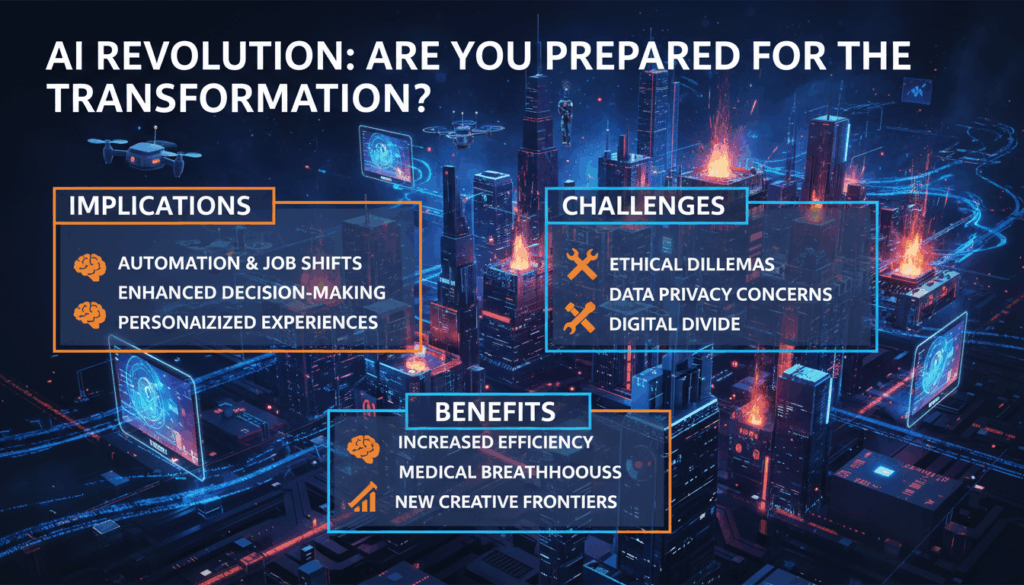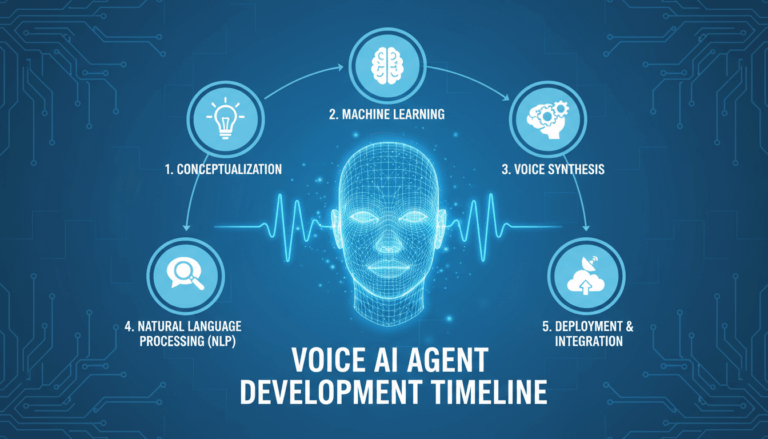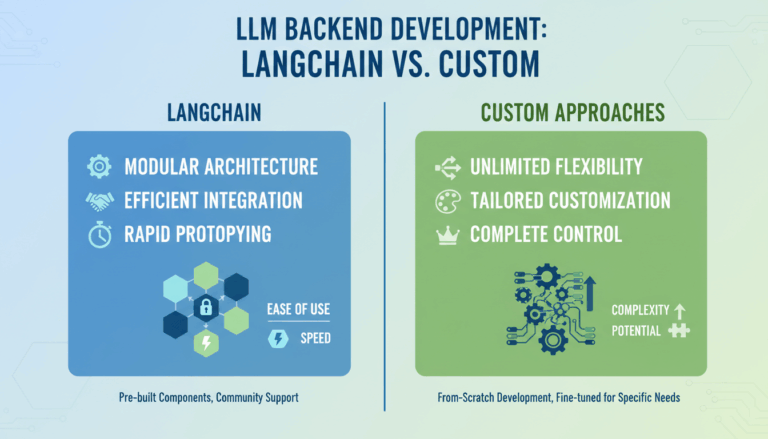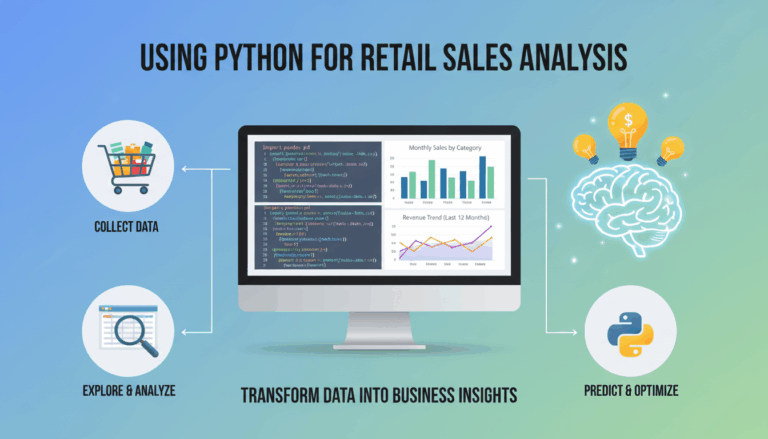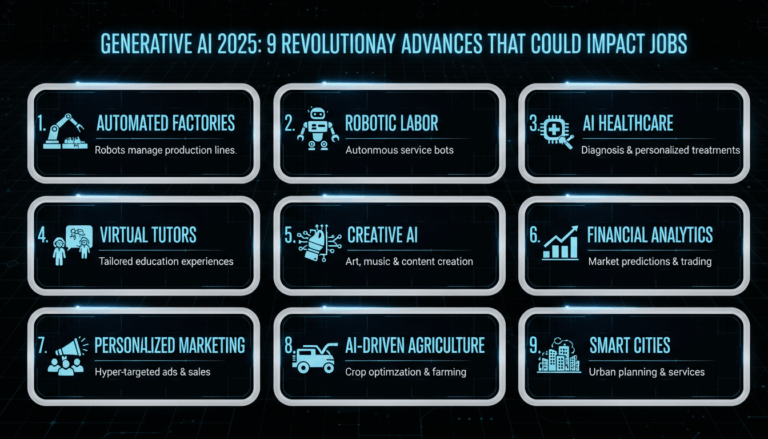Understanding the AI Revolution: Key Concepts and Impacts
The AI revolution is reshaping industries and daily life at an unprecedented pace, underpinned by a range of key concepts with vast impacts. At the core of this transformation are technologies such as machine learning (ML), deep learning, and neural networks. These technologies enable machines to process and learn from vast datasets, enhancing their ability to perform tasks traditionally handled by humans and even exceed human capabilities in certain areas.
Machine learning, a subset of artificial intelligence, involves training machines to recognize patterns and make decisions based on vast amounts of data. For example, recommendation systems on platforms like Netflix or Amazon are driven by complex algorithms analyzing user data to predict preferences. This is achieved through supervised learning, where models are trained on labeled datasets, and unsupervised learning, which identifies hidden patterns without explicit instructions.
Deep learning, often utilized within the broader ML framework, leverages neural networks with three or more layers—known as deep neural networks. These models mimic the human brain’s architecture, allowing them to perform classification tasks with high accuracy. A prominent example is image and speech recognition. Applications like Google Photos or voice assistants such as Siri and Alexa rely on deep learning for improving accuracy and personalization continuously.
The integration of AI is not restricted to understanding and executing tasks efficiently; it also extends to automating processes previously limited to human expertise. This shift brings about significant changes in almost every industry. In healthcare, AI aids in diagnosing diseases with increased accuracy, as seen in AI-driven diagnostic tools that analyze medical imaging to detect abnormalities even more precisely than human radiologists.
Another impactful concept is natural language processing (NLP), which allows computers to understand, interpret, and respond to human language in meaningful ways. This underlies the development of chatbots and virtual assistants, enhancing customer service experiences and streamlining operations in sectors that require constant customer interaction.
The economic impact of AI is enormous, with estimates suggesting trillions added to the global economy. Investment in AI technologies is growing, with industries recognizing the competitive advantage offered by AI integration. However, it is crucial to maintain a balanced perspective, considering ethical implications such as bias in AI decision-making and the displacement of jobs.
The social impact is equally transformative. AI’s potential to personalize learning experiences and assistive technologies for people with disabilities demonstrates its vast possibilities to improve quality of life. However, it is accompanied by the need for robust privacy protections and fair use policies to safeguard users.
Understanding these concepts and their impacts equips individuals and organizations to navigate the AI revolution effectively, ensuring they harness AI’s potential while mitigating associated risks. As AI continues to evolve, ongoing research and discussion regarding ethical guidelines and equitable access remain essential to ensure that this technological transformation benefits society as a whole.
Assessing Your Readiness for AI Integration
Preparing for AI integration requires a holistic assessment of various factors, starting with a clear understanding of your current technological infrastructure. Begin by identifying existing systems and technologies that could support or obstruct AI deployment. Assess your IT architecture’s compatibility with AI technologies, considering factors such as data storage capabilities, processing power, and cloud services. Upgrading legacy systems might be necessary to ensure seamless integration with AI tools.
Equally important is data readiness. AI thrives on data, so it’s crucial to evaluate your data collection and management strategies. Conduct a data audit to understand the volume, variety, and quality of data available. Ensure that data is clean, well-organized, and securely stored. Determine if you need additional data sources and how you will acquire and manage these datasets. Emphasize compliance with data privacy regulations like GDPR or CCPA when handling sensitive information.
Human resources are another vital component. Evaluate the skills and expertise within your organization to determine if there is sufficient AI literacy. Identify skill gaps that might hinder AI implementation. Workshops, training programs, or hiring experts might be necessary to equip your team with the required technical knowledge. Additionally, fostering an organizational culture that embraces change and innovation is essential to facilitate AI adoption.
Financial readiness is also a crucial factor. AI integration often requires substantial investment not just in technology but in training and restructuring processes. Develop a budget that reflects the costs of infrastructure upgrades, software licenses, and potential consultancy fees. Consider potential financial aids, grants, or partnerships that can mitigate these expenses.
Another aspect to consider is the strategic alignment of AI with business objectives. Clarify your objectives for AI integration—whether it’s improving operational efficiency, enhancing customer experience, or driving innovation. Develop a strategic plan that outlines clear goals and metrics for success. Having a robust implementation roadmap can help align AI initiatives with broader organizational goals, ensuring strategic coherence.
Finally, assess your organizational readiness from a governance perspective. Establish protocols for managing AI projects, including ethical guidelines and risk management strategies. Create oversight mechanisms to handle issues like bias or data privacy concerns and ensure AI solutions are used responsibly and equitably. This governance framework should work to mitigate risks and enhance the positive impact of AI integration.
Together, these readiness assessments form a comprehensive approach to AI integration, ensuring that your organization is well-equipped to harness the transformative potential of AI technologies effectively and responsibly.
Developing an AI Adoption Strategy for Your Organization
To effectively integrate AI into your organization, a thoughtfully developed adoption strategy is essential. This process begins with a clear alignment of AI capabilities with your overarching business objectives, ensuring a harmonious integration that propels organizational success.
Start by identifying key areas within your organization where AI can drive significant impact. Consider operational efficiencies, customer service enhancements, or product innovation as potential targets. An illustrative example could be using AI for predictive maintenance in manufacturing, where AI algorithms analyze sensor data to predict equipment failures before they occur, thus reducing downtime.
Next, engage stakeholders across various departments to foster a culture of collaboration and innovation. Inclusivity in discussions ensures diverse perspectives are considered, leading to a more holistic strategy. Conduct workshops or seminars that highlight AI’s potential and invite input on how AI can solve existing departmental challenges. This promotes buy-in and aids in dismantling resistance to technological change.
Examine the current technological infrastructure and assess its readiness to support AI initiatives. Upgrade legacy systems and enhance data processing capabilities as needed. For example, transitioning to cloud-based solutions can offer the flexibility and processing power required for handling large datasets frequently employed in machine learning tasks. Platforms like AWS, Google Cloud, or Azure provide scalable AI services that can accelerate deployment efforts.
Data forms the foundation of any successful AI application. Prioritize establishing robust data management systems that ensure data quality, accessibility, and security. Develop a comprehensive data governance framework to manage data collection, storage, and processing, adhering to privacy regulations such as GDPR. If leveraging AI for customer insights, ensure anonymization techniques are applied to protect sensitive information.
Human resources play a critical role in AI adoption. Evaluate the skillset of your workforce, identifying gaps that could impede progress. Investing in training programs or partnering with educational institutions can help bridge these gaps, equipping your team with necessary AI competencies. Moreover, consider creating specialized teams focused on AI research and development, or appointing AI champions within departments to spur innovation.
Develop a phased implementation plan, starting with pilot projects to test AI applications. These pilots provide valuable insights and allow for iterative improvements before scaling initiatives organization-wide. For example, a retail company might pilot a chatbot that assists with customer inquiries, refining its functionality based on real-world interactions and user feedback.
Establish a governance structure to oversee AI projects, ensuring ethical and responsible use. Define clear guidelines on addressing bias, maintaining transparency, and safeguarding user data. In healthcare applications, this might involve rigorous validation of AI models to ensure they deliver fair outcomes and comply with ethical standards.
Finally, measure and evaluate the performance of AI initiatives against predefined metrics regularly. Metrics should be aligned with business objectives, such as customer satisfaction levels, cost savings, or revenue growth. Use these insights to refine strategies, ensuring continuous alignment with organizational goals and the evolving business landscape.
In essence, a strategic AI adoption plan that balances technological, human, and organizational factors will enable your business to leverage AI effectively, driving innovation and maintaining a competitive edge in today’s dynamic environment.
Building a Culture of Continuous Learning and Adaptation
Building a culture centered on continuous learning and adaptation is pivotal in navigating the rapidly changing landscape of AI technologies. An organization imbued with such a culture is better positioned to leverage AI innovations effectively while adapting to the ever-shifting dynamics of technological advancements.
One of the foundational steps in fostering this culture is to encourage a mindset that values knowledge acquisition and personal growth across all levels of the organization. This can begin with the implementation of structured learning opportunities, such as workshops, seminars, and online courses. Investing in education platforms like Coursera or edX can provide employees with access to cutting-edge AI courses, enabling them to update their skills and stay ahead in the field.
It is equally important to promote a sense of curiosity and open-mindedness among staff to experiment and explore new AI technologies. Creating an environment where experimentation is encouraged, and failures are viewed as learning opportunities, can lead to innovative solutions and improvements. For example, setting up “innovation labs” where teams can test AI applications in safe environments can spur creativity and problem solving without the fear of immediate repercussions.
Leadership plays a crucial role in cultivating this culture. Leaders should model continuous learning behaviors by actively participating in learning initiatives and demonstrating their commitment to personal and organizational growth. Sharing personal learning journeys and discoveries can inspire employees to take ownership of their development. Additionally, recognizing and rewarding efforts towards learning within the organization fosters motivation and reinforces the importance of this cultural shift.
To support ongoing learning, organizations should develop a framework for knowledge sharing and collaboration. Establishing internal platforms or forums where employees can share insights and learn from each other’s experiences encourages a communal learning atmosphere. For instance, hosting regular “knowledge-sharing” sessions where team members present on their projects or the latest industry trends can facilitate this exchange of information and enhance collective expertise.
Integrating continuous learning into the core organizational values further embeds this culture. By aligning learning initiatives with the company’s strategic objectives, it becomes evident that adaptation and development are not just encouraged but are integral to company success. Drafting policies that allow employees time for self-directed learning or educational pursuits demonstrates organizational commitment to employee development.
Moreover, the use of AI tools to personalize learning paths is an innovative approach that organizations can leverage. AI can analyze individual performance data to recommend tailored learning experiences, which can increase engagement and effectiveness. This adaptive learning strategy ensures employees acquire relevant skills that align with both their professional aspirations and the organization’s needs.
Another significant aspect is creating cross-departmental teams that combine diverse skill sets and perspectives. This collaboration not only promotes a broader understanding of AI initiatives but also cultivates adaptability as team members learn to work within varying contexts and constraints.
Finally, measuring the impact of these learning initiatives through regular feedback and assessment helps refine them over time, ensuring they remain relevant and impactful. Surveys, performance metrics, and employee feedback can provide insights into how learning strategies contribute to individual and organizational growth.
Incorporating these elements into the organizational fabric encourages a dynamic, adaptable culture that is essential for thriving in the AI-driven future.
Implementing AI Solutions: Best Practices and Case Studies
When it comes to implementing AI solutions, adhering to best practices is essential for successful deployment and maximizing the return on investment. A comprehensive understanding of best practices, paired with insights from successful case studies, can guide organizations in navigating through AI adoption effectively.
Initiating the implementation process requires a clear definition of the problem to be solved by AI. Precise problem identification lays the foundation for selecting the right AI tools and models. For instance, a healthcare provider looking to improve patient diagnostics could implement AI-driven image analysis systems tailored to recognize specific medical conditions, such as pneumonia from chest X-rays.
To ensure the AI models are effective, it is critical to focus on data quality and availability. Implementing robust data governance practices ensures that the datasets used for training AI are comprehensive, well-organized, and free from bias. An example can be drawn from the retail industry, where companies like Amazon utilize AI to personalize recommendations by analyzing purchasing history and behavior. The success of this AI application is contingent upon the accuracy and relevance of the data collected.
Another best practice involves choosing the correct AI model and methodology tailored to your specific needs. Supervised learning is ideal for scenarios where a large amount of labeled data is available, forming a base for predicting outcomes accurately. Conversely, unsupervised learning can be utilized for clustering and pattern recognition in unstructured datasets, as demonstrated by Facebook’s use of image recognition to identify and tag users automatically.
Once the AI model is selected, thorough testing and validation against high-quality datasets are paramount to ensure performance and reliability. Leveraging cloud-based platforms like AWS SageMaker or Google Cloud AI provides scalable resources for model training and testing. For example, Netflix uses A/B testing to continuously evaluate and enhance its recommendation algorithms by experimenting with user interaction data to ensure content suggestions remain relevant and engaging.
An essential element in AI implementation is embedding strong ethical considerations and ensuring transparency. Developing AI systems with interpretability in mind not only builds trust but also facilitates compliance with regulations, like GDPR. Google’s AI principles emphasize these aspects by implementing explainable AI solutions to ensure trustworthiness in their applications.
Furthermore, continuous monitoring and maintenance of AI systems are critical. Models sometimes degrade over time due to changing data patterns, referred to as concept drift. Regular updates and retraining of models using new data can mitigate this risk, as seen in the financial sector, where fraud detection systems are frequently updated to recognize emerging fraudulent activities.
Learning from successful AI deployments can offer insightful lessons. For instance, the deployment of IBM Watson in healthcare to support oncologists by analyzing extensive medical literature has revolutionized diagnostic accuracy and treatment planning. Watson’s ability to quickly process vast information highlights the benefits of AI solutions in augmenting human capabilities.
Finally, the iterative nature of AI implementation should be embraced. Starting with small-scale pilot projects allows organizations to experiment, validate ideas, and gather user feedback without committing substantial resources. An iterative model adapts well to organizational feedback, facilitating smooth scaling once initial implementations prove successful.
Incorporating these best practices ensures that AI implementation aligns with organizational goals, leverages the latest advancements responsibly, and delivers tangible value across diverse sectors.
Addressing Ethical Considerations and Data Privacy in AI
Ethical considerations in AI development and implementation are paramount, touching on a variety of critical issues such as fairness, transparency, and accountability. To ensure machines act in ways that align with societal values, developers and organizations must adopt ethical frameworks and rigorously apply them throughout the AI lifecycle.
A key aspect of addressing these ethical issues lies in mitigating bias. AI systems, trained on large datasets, can inadvertently learn biases present within the data, leading to skewed outcomes. For instance, facial recognition technologies have faced criticism for demonstrating racial bias due to the lack of diversity in training datasets. To combat this, developers must ensure datasets are representative and comprehensive, encompassing diverse demographics to foster fairness.
Additionally, transparency is essential for maintaining trust. Organizations should aim to create explainable AI (XAI), enabling users to understand how decisions are made. This involves developing models that are interpretable and ensuring that decision-making processes can be traced and justified. For example, in autonomous driving systems, transparency can help clarify decision paths during incidents, facilitating accountability and trust.
Data privacy concerns are equally significant, with legal frameworks like the GDPR and CCPA setting stringent guidelines for the handling of personal data. To comply with these regulations, companies must implement robust data protection measures, such as encryption and secure access controls. Anonymization techniques also play a crucial role in protecting individuals’ privacy by altering data to prevent the identification of individuals while allowing for valuable insights from analytics.
Implementing privacy-preserving AI technologies is an emerging field that combines machine learning prowess with strong data protection practices. Techniques like federated learning allow AI models to be trained across distributed devices without centralizing sensitive data, thus enhancing privacy and security. This approach has been employed in industries such as healthcare, where patient data privacy is of utmost importance.
Moreover, organizations should establish ethical guidelines and governance structures to oversee AI initiatives. This involves creating ethics committees to review AI projects and ensure they abide by set ethical standards. Continuous evaluation and reporting mechanisms can help identify potential risks early and maintain compliance with evolving ethical norms.
The concept of AI ethics is not static; it requires ongoing dialogue and adaptation as technologies advance. Engaging with stakeholders—including ethicists, policymakers, and the public—ensures that diverse perspectives are heard, and AI systems are developed with broader societal considerations in mind. Organizations like the Partnership on AI and AI Now Institute foster collaborative efforts to tackle these ethical challenges and advocate for responsible AI use.
Ultimately, addressing ethical considerations and data privacy is crucial for ensuring AI technologies benefit society equitably and sustainably. By embedding ethical practices into AI development and prioritizing data protection, organizations can leverage AI’s transformative capabilities while safeguarding individual rights and societal values.
